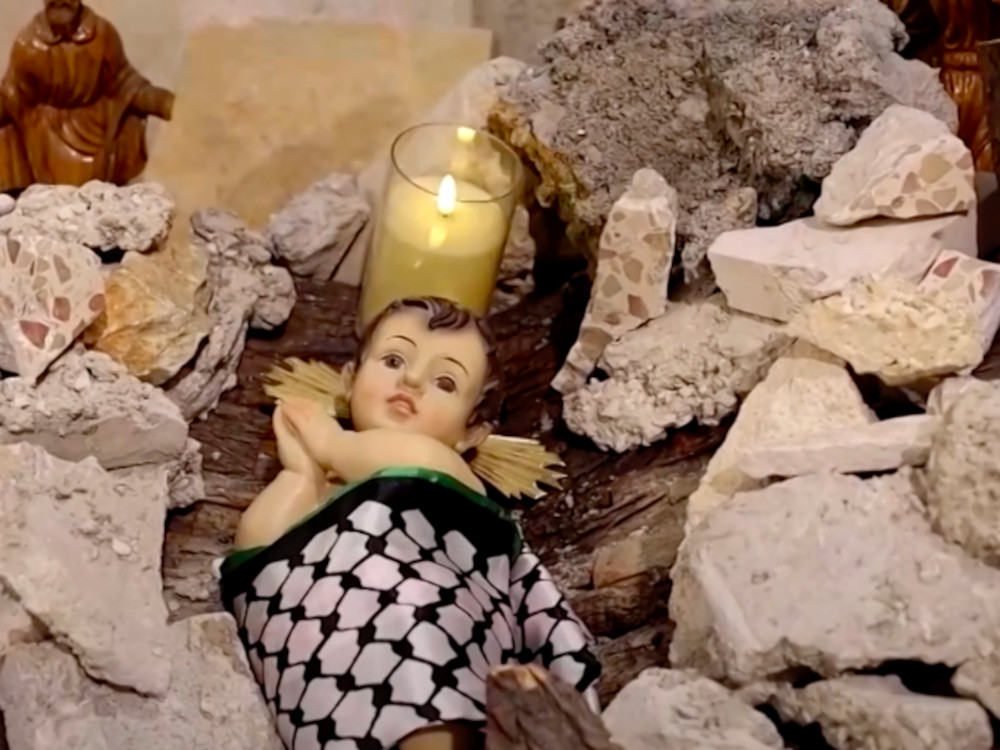Intersectionality, essentially the idea that the world is divided into the oppressed groups and those doing the oppressing, has come to a crossroads. And it is the conflict in Gaza and Israel that has brought about the situation where the logic of intersectionality has been brought into question.
Or to put it another way, intersectionality has come to an intersection. What was once a freeway has come to a tee junction.
We can pick President Biden is one guide through this intersection. While promising humanitarian aid to the people of Gaza at a Hanukkah campaign briefing the president said “We know that this year’s Hanukkah is different after October the 7th attack. As I said after the attack, the safety of the Jewish people, the literal security of Israel as an independent Jewish state is literally at stake. But it is unshakeable, our commitment to Israel.
“We continue to provide military assistance to Israel as it goes after Hamas. And I’ve personally spent hours — hours, without exaggeration — talking to the Qataris, the Egyptians, the Israelis to secure the freedom of more than 100 hostages. And we’re not going to stop until – every hostage is returned home – (applause) – every one.
“We’ll continue leading the world in delivering humanitarian assistance to the Palestinian civilians as well to emphasize to our friends in Israel the need to protect civilian life. And they understand it, the vast majority of the population.
“But most of all, we condemn Hamas’s using rape, sexual violence, terrorism, and torture of Israeli women and girls without equivocation, without exception.
“You know, they — I saw some of the photographs when I was there — tying a mother and her daughter together on a rope and then pouring kerosene on them and then burning them, beheading infants, doing things that are just inhuman — totally, completely inhuman.
“I also recognise your hurt from the silence and the fear of the safety — your safety because of the surge of antisemitism here in America and around the world.”
And here’s another guide to the crossroads, this time expressed as a picture and a video. A Bethlehem church has the baby Jesus in a manger in the rubble, representing Gaza.
“This is what Christmas looks like in Palestine,” Rev. Dr. Munther Ishaq, the pastor of the Evangelical Lutheran Christmas Church, told Al-Jazeera.
“Christmas celebrations are cancelled this year — for it’s impossible to celebrate Christmas while our people in Gaza are going through a genocide,” said Ishaq. “Usually, it’s Jesus in the manger surrounded by the shepherds, surrounded by the Holy Family Joseph and Mary and the magi who came from the east.
“Here we wanted to say that it is as if they are looking for Jesus in the midst of the rubble.”
Last week the Israel Defence Forces released a figure saying they have killed 7,000 Hamas fighters, with a 2 to 1 ratio of civilan dead. That comes close to figures of 18,000 dead reported by the Hamas-controlled Gaza Health Ministry.
Intersectionality would demand that we pick one side: the side of the oppressed. But in tis situation there are two sides with two just causes. This was first expressed by Guardian columnist Jonathan Freedland, a Jewish writer on the left-of-centre paper. “Thinking like this – my team good, your team bad – can lead you into some strange, dark places. It ends in a group of terrified Jewish students huddling in the library of New York’s Cooper Union college, fleeing a group of masked protesters chanting “Free Palestine” – their pursuers doubtless convinced they are warriors for justice and liberation, rather than the latest in a centuries-long line of mobs hounding Jews.”
The Sydney Theatre Company’s dilemma of actors expressing their views on stage with keffiyehs, and Jews choosing a different protest method by resigning from the fundraising board, fits Jonathan Freedland’s view of two sides with just cause, but each demanding one backs their side.
Many readers will be firmly on one side or the other. But others of us are caught between two different horrors – October 7 and the saturation bombing campaign that followed which of course can’t be moral equivalents – they are two very different horrors. And behind them sit two different peoples and one land.
One land: leading OT scholar Walter Brueggemann wrote a book about God’s placing the people of Israel in the Holyland. The Land: Place as Gift, Promise, and Challenge in Biblical Faith explore the idea that God did not choose an easily defendable land to send the children of Israel to. Not a Switzerland surrounded by mountains, not a Britain ringed by water. But a land relatively easy to invade, positioned on the route that great powers and empires would use to attack each other, for example the Egyptians and the Syria-based Hittites (as shown clearl;y at the Pharoah Rameses II exhibition that’s running in Sydney.) It was a land that would teach the Israelites to stay close to God or risk judgment in the form of exile.
It is a land destined to be fought over.
Intersectionality demands we pick one oppressed people and one oppressor. But I can’t do that.

